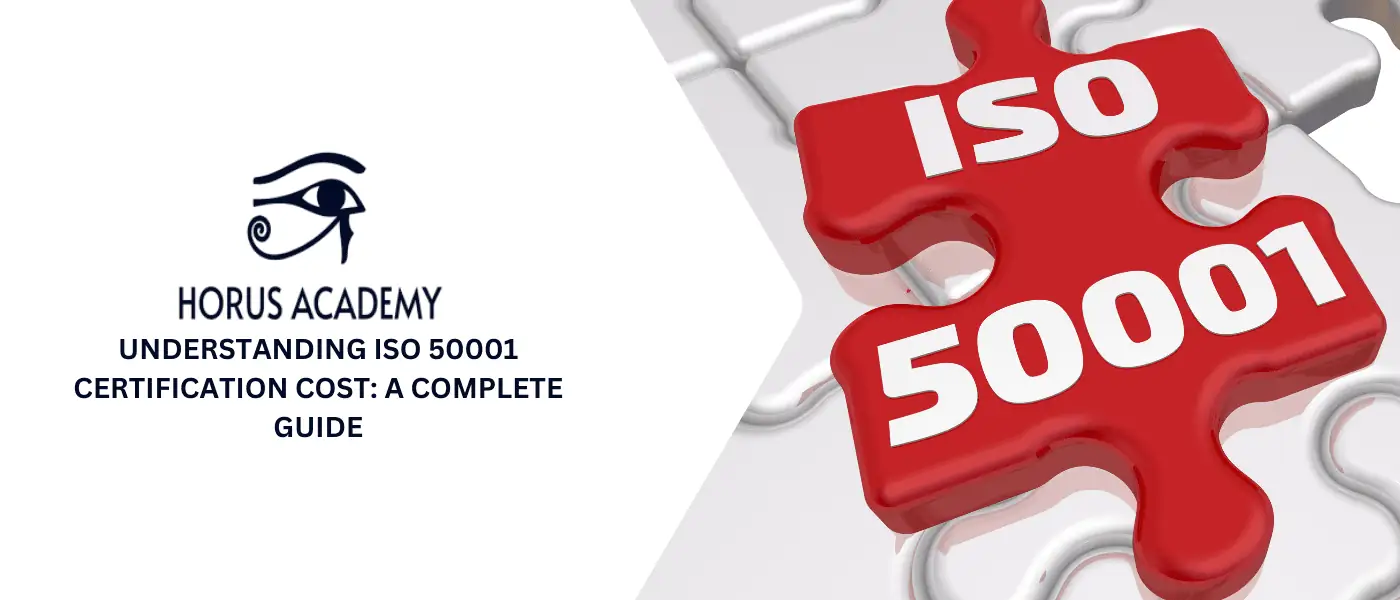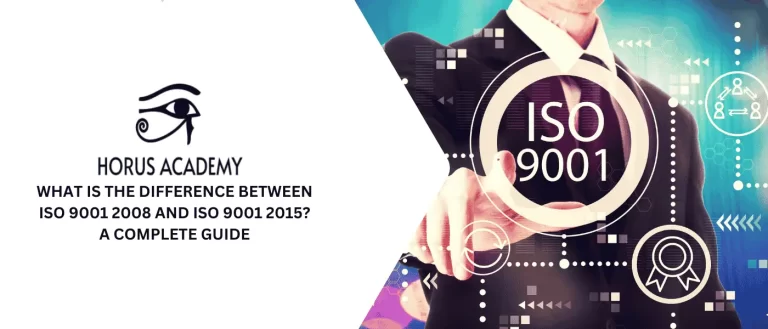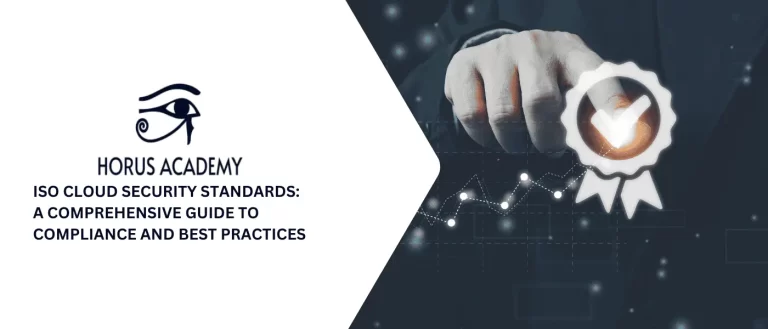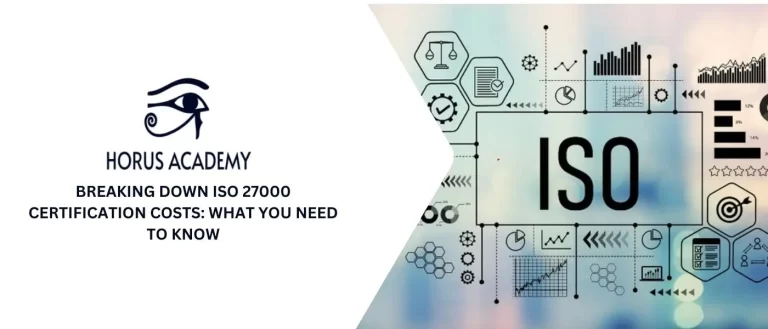
Many organizations ask about ISO 50001 certification costs and requirements. This is because, in an era where energy efficiency and sustainability are vital, ISO 50001 certification has become an essential tool for businesses looking to maximize energy use and reduce costs.
This certification shows a dedication to environmental responsibility in addition to improving operational efficiency.
In this article, we will explain what is ISO 50001 certification, its importance, the factors that affect the cost, and how to face the challenges that come up during certification.
Table of Contents
ToggleWhat Is ISO 50001 Certification?
ISO 50001 is an international energy management system certification that offers guidelines for determining, controlling, and enhancing an organization’s energy use and efficiency and applies to businesses of all sizes.
ISO 50001 is intended to be coherent and compatible with other system standards, including ISO 9001 for quality management systems and ISO 14001 for environmental management systems.
As a result, it is perfect for incorporating into current management procedures and systems, including those related to health, safety, and the environment.
It supports energy efficiency compliance for projects aimed at reducing greenhouse gas emissions.
It also encourages energy management best practices and habits and offers a framework for increasing energy efficiency across the supply chain.
Explor PECB ISO 50001 lead Auditor Course – Self Study in English
Why Invest in ISO 50001 Certification?
Before we understand the factors that affect ISO 50001 certification cost, we need to know if it’s worth it to invest in this certification.
Your company may get several advantages by certifying your energy management system with ISO 50001, such as:
- Enhancement of energy performance, including energy efficiency, usage, and consumption.
- Lowering greenhouse gas emissions and other environmental effects without compromising business operations while also boosting profitability.
- Continuous enhancement of the systems for energy management.
- Ensuring that energy use is measured, recorded, reported, and assessed helping with managing the input and output.
Explor PECB ISO 50001 Certification – Lead Implementer – Self Study
ISO 50001 Certification Cost
The ISO 50001 certification cost changes based on many factors. Here is what the ISO certification cost breakdown might include:
- The organization’s size: Large firms with several branches or locations need a more thorough audit, which raises the price.
- Internal readiness: The cost of ISO certification may be cheaper if the business is already almost in conformity with ISO standards.
- Procedure and audit duration: Businesses with complex administrative processes would need more auditor visits, which would raise the overall cost.
- Training and consultation: A lot of firms need consulting or training services to make sure they are meeting the criteria which raises the final cost.
Explor PECB ISO 50001 Foundation – Self Study in English
Initial Assessment and Gap Analysis
The initial assessment and gap analysis can help you understand the ISO 50001 certification costs more.
They give you an idea about where your organization is when compared to the ISO standards.
A gap analysis consists of four primary processes, including:
- Interview: You need to evaluate your present procedures in comparison to best practices for energy management.
- Documentation: To ensure alignment with current standards, you should analyze your energy management documents.
- Gap Report: Conduct a thorough report, presentation, and strategy that includes deadlines, ownership, and actions.
- Implementation: You can either get a consulting assistance from a professional via certification using your action plan, or you may carry it out on your own.
Explor PECB ISO 50001 Auditor – Self Study in English
The Importance of Gap Analysis
To obtain ISO 50001 certification, a gap analysis is a necessary first step. After doing a gap analysis, your senior management team should have a detailed thorough report.
This report clearly outlines your areas of ISO 50001 compliance and, more crucially, points up any gaps.
This will provide you with a realistic schedule for obtaining ISO 50001 certification along with practical advice.
Explor PECB ISO 50001 Course – Lead Implementer- Self Study in English
How to choose the right accredited body and its impact on cost
Choosing the appropriate ISO certification body is a crucial step in the ISO 50001 audit process.
You can choose the best ISO certification based on:
- Recognition: Making sure an ISO certification body is accredited is one of the most important aspects to consider.
- Experience and Knowledge in the Industry: Select a certification organization that has experience in your industry because they frequently specialize in different fields.
- Geographic Presence: Select a certification body with a broad geographic presence if your company works internationally or has many locations.
- Credibility and Reputation: Your certification will gain greater credibility if it is issued from a recognized and trustworthy certification body.
- Price and Cost Structure: Make sure the certifying body offers a detailed cost breakdown to prevent unclear pricing structures.
Common Challenges During Certification
When putting ISO 50001 into practice, common challenges might include:
- Lack of management commitment: the solution to this is to describe the financial and ecological advantages.
- Lack of resources: For the best resource allocation, prioritize energy efficiency as part of strategic planning.
- Resistance to change: Provide training and competency development programs and include staff members in the procedure.
Conclusion
Earning ISO 50001 certification is a wise investment for businesses looking to cut expenses, improve energy efficiency, and show environmental responsibility.
While the ISO 50001 certification costs depend on factors such as company size and audit complexity, the long-term benefits outweigh the expenses.
The procedure may be simplified and a good result can be guaranteed by choosing an approved certification body and conducting a comprehensive gap analysis.
Businesses that adhere to ISO 50001 can enhance sustainable energy management, comply with regulations, and become more profitable despite any challenges.
Businesses may set themselves up for long-term success in a competitive and eco-aware market by putting an emphasis on energy efficiency.
Visit our website and start your path to learning about energy performance improvement.
FAQ
What is ISO 50001 certification?
ISO 50001 is a strategic tool for implementing an energy management system (EnMS) and guaranteeing more effective and efficient energy use is the energy management system.
How much does ISO 50001 certification cost?
ISO 50001 certification costs vary depending on the size of the organization and the tools needed to meet the standards.
What are the benefits of ISO 50001 certification?
ISO 50001 helps organizations improve energy efficiency, energy usage, and energy consumption by assessing and prioritizing adopting innovative energy-efficient technology.
Additionally, it promotes transparency and eases communication on energy resource management.
How long does it take to get ISO 50001 certified?
The time required to implement the system inside the organization and get ISO 50001 certified might range from two to six months.
You May Also Like
A partners with PECB since 2021
HORUS Training offers over 100 certification programs on ISO Standards via E-learning / Self Study / Live online. Most Popular Courses are ISO 27001, ISO 22301, ISO 31000, ISO 9001, ISO 37001, GDPR, ISO 27032 Cybersecurity
Categories
Contact
- 15399 Guildford Drive, Surrey, BC, V3R 7C6, Canada.
- Info@horus.academy
- +1-506-300-5550


